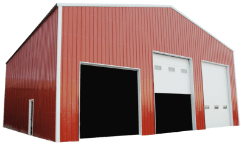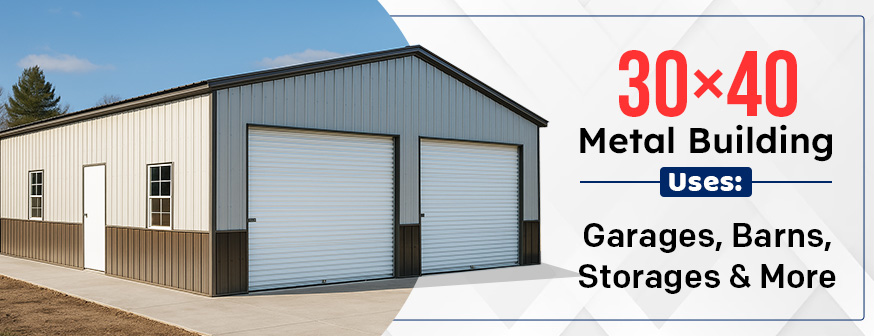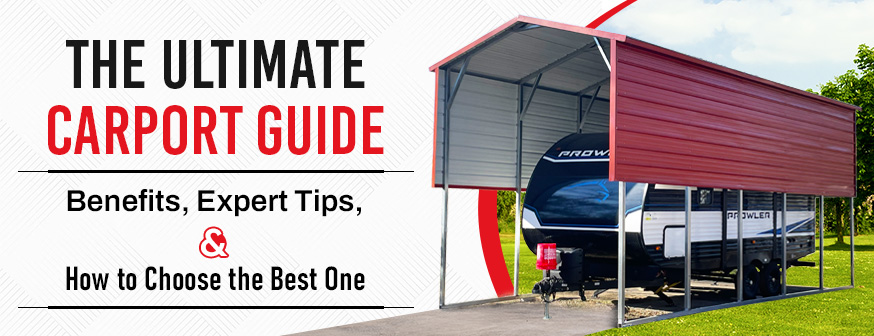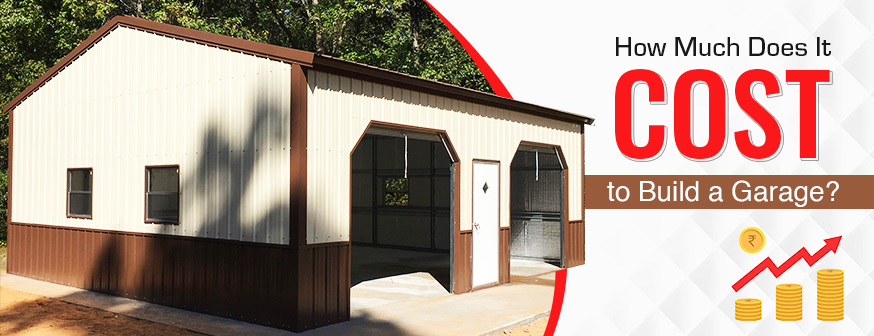What Carport Size Do You Need? Expert Tips to Get It Right the First Time
 May 26, 2025
Posted in: Carports, Metal Building Tips
May 26, 2025
Posted in: Carports, Metal Building Tips
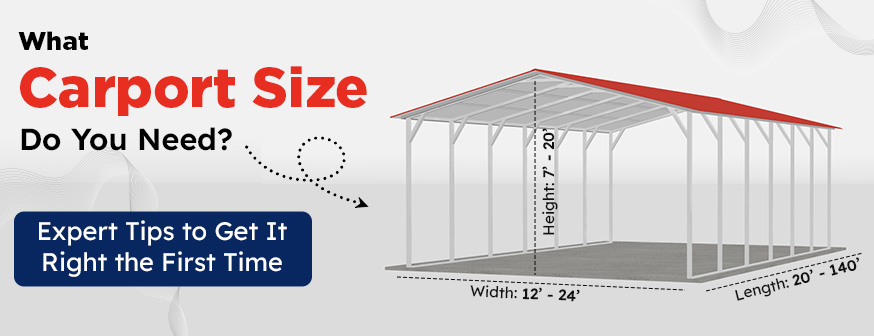
Planning for today but unsure about tomorrow’s space needs? Let this guide help you get the sizing right.
Too often, people realize after installation that their carport is either too small for future needs or unnecessarily oversized. To avoid such instances and additional costs, we must have looked at the sizing of our carports from various angles before installation. Whether you’re a homeowner or a fleet, the sizing of the carport is the most crucial factor that needs deep thought.
Here is a comprehensive guide that will help you understand the factors that must be considered before picking the right carport.
Why Does a Carport Size Matter?
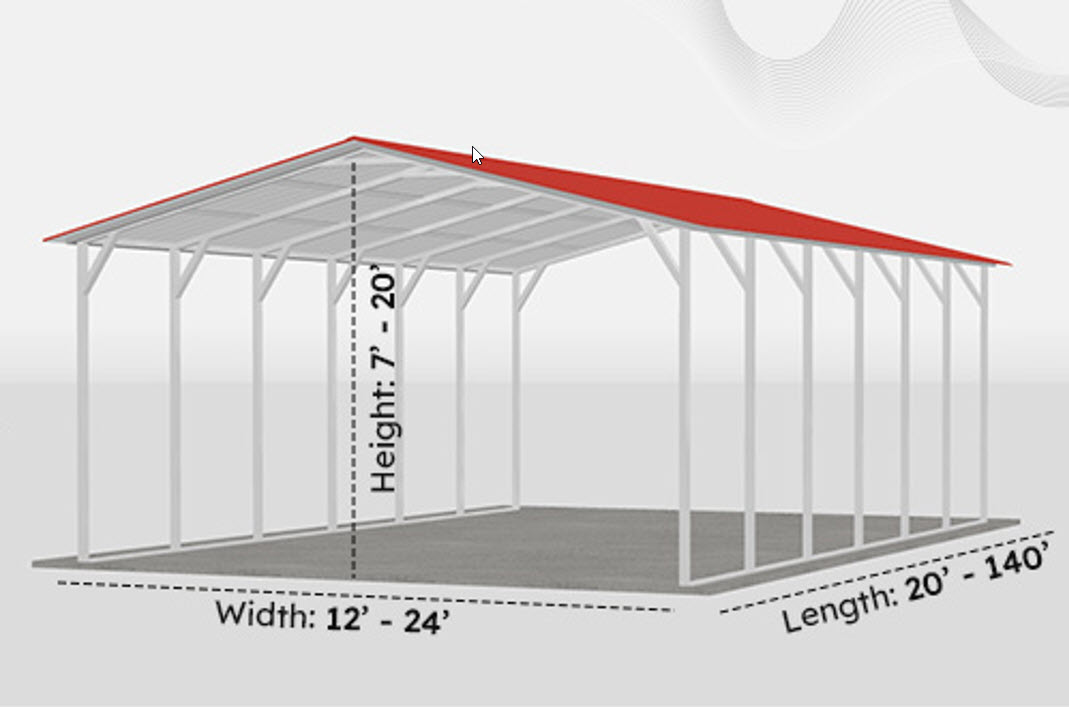
Generally, the only thing people consider while picking the size of the carport is the shelter space for the vehicle they currently have. For boats, RVs, or smaller cars, the sizing of the carport is decided based on the required shelter space. But there is much thought that should go into the sizing of carports. Consider buying a different vehicle, upgrading your car, buying an SUV instead of your current Polo, or your family might get bigger. You might have to buy a different, more spacious vehicle, you may consider adding a new unit for some light equipment space, any personal project, storage, or turning it into a space for fun events like a weekend grill-chill party zone, occasionally. If you have this on a farm, it can be for an RV shelter. However, RVs have additional equipment that comes along with them for maintenance.
Instead of upgrading the size later, you may buy a carport with the right size, which can shelter both your current vehicle and, if you plan to upgrade your vehicle later, with ample storage space. A carport installation can last for years to decades. Therefore, even if you’re not considering very long-term, a practical choice based on your taste and patterns in vehicle selection and upgrades, along with the possibility of personal projects at an affordable range, is a good option.
Also Read – Ultimate Carport Guide
What Do You Need a Carport For?
Start by listing your primary and secondary needs:
- Shelter for a car, truck, or RV
- Storage space for equipment, tools, or outdoor gear
- Occasional use for social gatherings or creative projects
- Additional shaded space for porches or farm usage
Standard Carport Sizes Explained
Carports come in three standard sizes- Single, Double, and Triple carports.
Single carports
Single carports are best described as a carport used as shelter for a compact vehicle; most homeowners use a single carport for a small-sized truck. This is about 12 feet wide, with enough accessibility and storage space for comfortably parking a standard car or vehicle.
Double carports
Double carports are used for more than one or two vehicles, generally not standard-sized vehicles, such as sedans or luxury cars. This provides ample space to comfortably shelter two sedan-sized vehicles, ample storage space, and accessibility, as well as providing the option to be used for personal or artistic projects. These are usually sized at 18-24 feet.
Triple carports
Triple carports are used to shelter mid-to large-sized boats, a fleet of vehicles, or a few sedans, along with a combination of larger vehicles like trucks or a bus. It is typically sized at 26-30 feet.
Popular Carport Roof Types
There are three types of roofs available for carports to choose from, including metal and wooden structures:
Regular Roof RV Cover
Our most affordable option is the regular roof RV cover, which features a curved roof line and construction with an easy bend transition on the legs or posts. This streamlined build saves labor and materials- no eave side trim, ridge cap, or hat channel here- making it the most cost-effective option for sound shelter.
Boxed-Eave Roof RV Cover
The boxed eave is more of a traditional, house-like roofline, providing a clean, finished appearance. It consists of horizontal roof panels, eave side trim, and smaller L-Trim at the ends for a cleaner appearance. Some manufacturers omit the eave trim on this style, but ours comes with it. This style provides the appearance of an A-frame at a reduced price compared to a vertical roof configuration.
Vertical Roof RV Cover
The vertical roof is the top option for looks and functionality. Its vertically-positioned panels permit rain, snow, leaves, and other debris to slide off more easily than on horizontal-panel roofs. It makes maintenance less and makes it more durable, particularly in regions subject to heavy weather. In contrast to the regular and boxed-eave roofs, debris will not get caught in the panel ridges, so it is the most effective and low-maintenance option.
Factors To Consider When Choosing a Size
Choosing a carport size is essential, but not as hectic as you might feel. To keep it clear and straightforward, you must check your current needs and the near future, say, 5 years. That is how long, at least, you’re hoping that your carport might be able to adapt to your changing requirements.
Next, don’t hold back on the ideas you have in mind. You can use it to occasionally showcase your culinary skills on a Friday evening with your friends, or a small area for creativity, because carports do get used beyond just parking vehicles. You can also use it to expand your storage, such as farm equipment, if it’s on a farm, etc. These are all possibilities that a carport can equip; you may size your carport accordingly.
Another thing to keep in mind is the overall space you have. The area should also be decided based on the available open space around the house you wish to devote to this.
Carport Material and Type
Carports are available in Wooden and metal frames. While wooden carports look aesthetic, they aren’t durable and might be a liability in the future, with additional costs in maintenance and replacement. Metric carports are weather-resistant, built to last, and way more sustainable than any other material. They also adapt easily to your changing requirements without any effort.
Tips To Avoid Under-Sizing Carports
- Consider the size of the vehicle along with storage space for additional equipment.
- Don’t forget your plans and the number of vehicles you wish to add.
- Don’t unnecessarily add to your plans if you don’t require it in the immediate future. Yes, it is easy to get ambitious about what your imagination can lead to, but not be practical in the real world, and lead to the wastage of money.
- Ensure you’re assessing the area where the carport will be installed so it doesn’t go out of proportion.
- Choose a carport size that is right for you in the present and near future, but do not bring all your plans, which may or may not be feasible. However, it is essential to ensure that there is some room for possibility
When to Customize Your Carport?
You can decide when you know the types of carports available, the sizing, which one you want, and how it will adapt to your immediate surroundings. Know all your options regarding materials, weather conditions in your area, space available, number of vehicles, and equipment, and have an idea about the sizes available. This is where you can go ahead and use a 3D estimator of most websites or explain your customization to your carport consultant to book your selection as per your needs.
Explore our full collection and find the perfect fit for your needs. Shop All Metal Carports today!
Frequently Asked Questions (FAQs)
Q1. Can I extend my carport later?
Yes, but it depends on the original frame design and spacing. Planning for the correct size from the beginning is easier and more affordable.
Q2. How tall should my carport be for an RV?
For most Class A or C RVs, a minimum of 14′ height is recommended to allow clearance and airflow.
Q3. Are permits required for carports?
Regulations vary by city and county. Check with your local authorities or ask your dealer to guide you through the permitting process.
Q4. Can a carport be enclosed later?
Many metal carports can be converted to enclosed garages by adding side panels, doors, and insulation.
Q5. What’s the most common mistake when choosing a carport?
Under-sizing- many buyers don’t plan for extra space or future upgrades, and end up needing modifications soon after.
